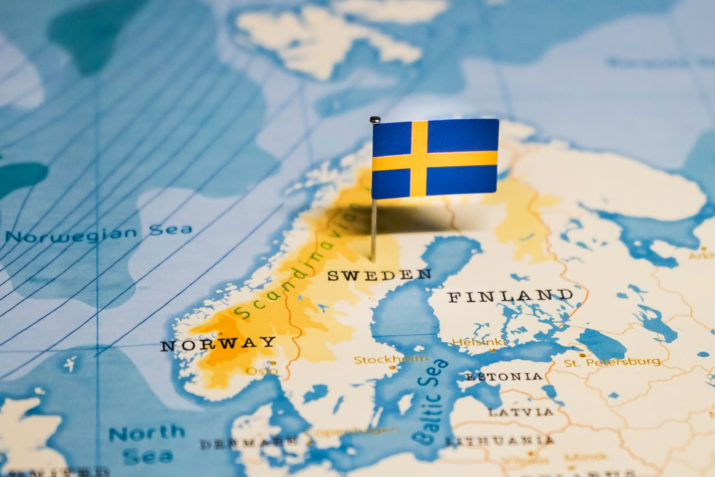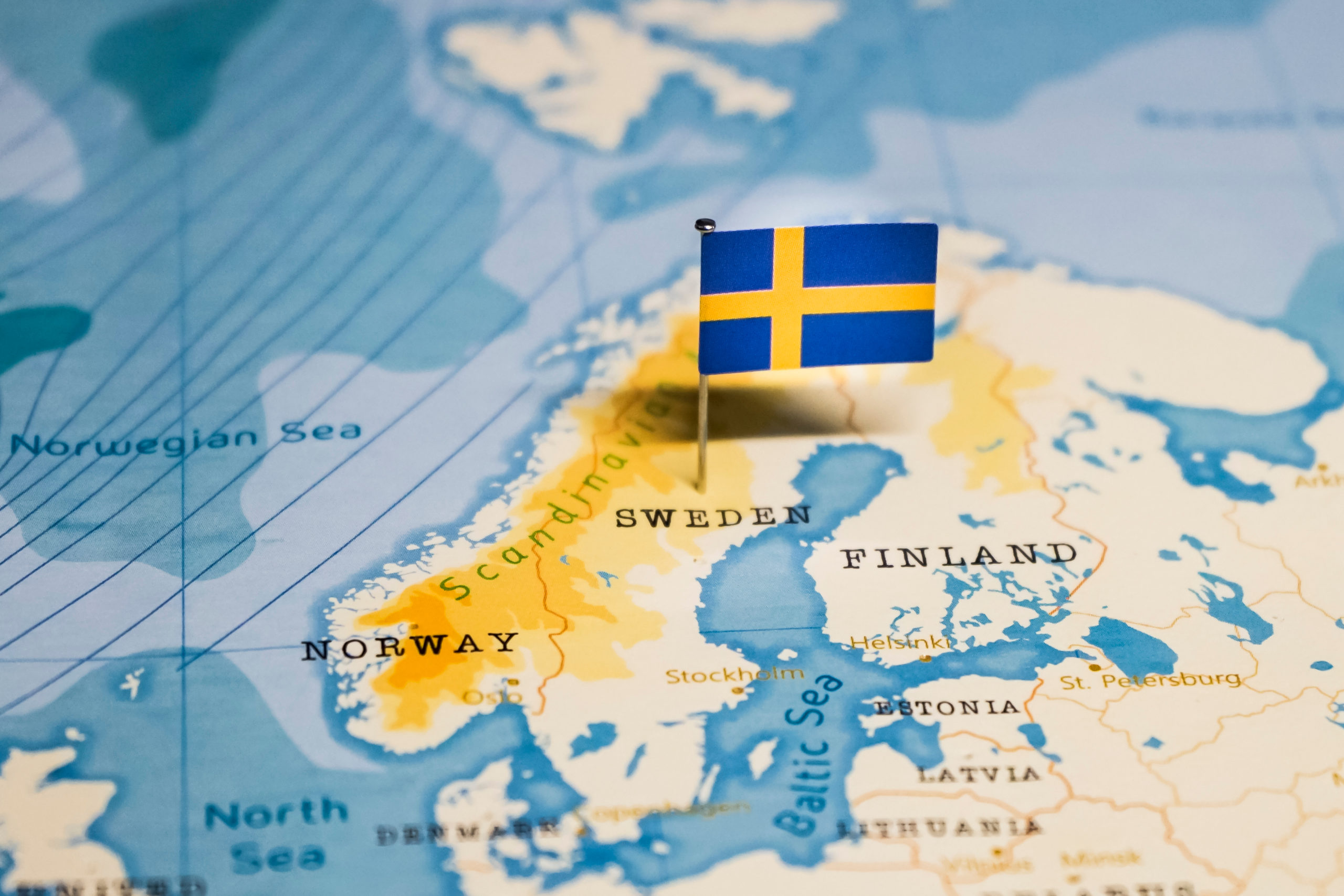
 This is part of our special feature, Business in Politics and Society.
This is part of our special feature, Business in Politics and Society.
The idea that Western Europe has the Soviet threat to thank for our social policies is a long-standing presumption amongst leftist historians and remains a strategic narrative in the foreign policy of post-Soviet Russia today (cf. Gorenburg 2019). Until a decade ago, mainstream research on the history of the European social model hesitated to address this hypothesis (Obinger & Schmidt 2011). Rather than refute it, most research ignored it. Still, the narrative that the historic Soviet Union was an engine behind global welfare state development lived on – and may be experiencing a revival (cf. Rasmussen and Bergli 2019). Why then, have scholars waited to address this possibility? Perhaps they worry that dignifying the claim with scientific attention would support Soviet-era propaganda and undermine the legitimacy of the democratic welfare state.
This article is based on the reverse premise: Instead of ignoring it, we should follow the call of British historian E.H. Carr and study the historical Soviet impact on the West. Propaganda is most effective when it is based on a kernel of truth. To counter it, we should examine that kernel and de-construct the narratives surrounding it. In effect, leftist narratives of how the Soviet impact happened should be analyzed as part of history itself. However, comprehensive, or “grand” narratives of history can be difficult to refute, when they are too overarching to be tested empirically. As Hacker and Pierson noted, even large amounts of data may not settle disputes about political influence, since facts do not speak for themselves but must be interpreted. Also, narratives are compelling as storylines which poses a challenge for human cognition. Stories about villains, heroes, struggle, and redemption can capture our imagination in ways that evade rational refutation. The narrative of the Soviet threat as a constructive force in Western social development taps into deep-seated political beliefs which for most individuals simply do not change during a lifetime.
In the romantic, apologetic narrative, Soviet communism was a revolution by the “masses”; the urban workers and the lower classes. In contrast, critical historians view the Russian revolution as a coup by a small elite of manipulative and extraordinarily violent authoritarians, who ventured to spread their political fervor and innovative organizational templates to other aspiring tyrants across the globe (Beevor 2022). From this perspective, centrist reformism in 1930s Sweden was an adept strategic response that protected society from the totalitarian threats of the time (Berman 2006). The contest between these two narratives is not easily settled by the accumulation of more data since some of the same facts can be compatible with both. Macro-quantitative data, such as statistics on how the East and West adopted superficially similar social policies, does not specify the causal mechanism. Still, the narrative of the Soviet-threat-as-hero can be challenged and de-constructed from several vantage points. This text suggests three, drawing on examples from my own research. First, the Soviet impact was based on falsities. Archival research, including my studies of communist-era travel controls, has shown that information on life behind the iron curtain was much more heavily filtered and distorted than Western contemporaries realized (Hedin 2019a). Still today, the new archival research on former communist regimes has largely failed to reach mainstream political science (Hedin 2021). For example, as historians are currently mapping, the level of many communist state welfare provisions were conditioned on political loyalty. In this sense, access to higher education, coveted vacation spots, good housing, cars, telephones, and better old-age pensions was selective and not universal. Arguably, if this had been more widely known in the West, the credibility of communist reforms would have been weakened.
As a corollary, the Soviet impact on Western Europe was superficial: it took place primarily at the level of identity and imagination, myth and ceremony. Within Western social science research, from the 1960s, leftist interpretations gained ground, casting employers as absolute adversaries and communist sphere policies as (misunderstood) role models. Around the globe, the Soviet impact helped propel a trend, fashion, or zeitgeist that was superficially inspired by, but de facto profoundly decoupled from, actual events behind the iron curtain. Within organizational studies, the phenomenon of superficial imitation is termed isomorphism (Krücken and Drori 2010). In one of my texts, I outline the investigative methods by which we can study Soviet sphere impact on the West as “Cold war isomorphism” (Hedin 2016).
The superficial nature of East-West isomorphism does not mean that it lacked impact. Rather, its effects were extraordinary, both on the political agenda and on how political actors understood themselves and their relations with each other. From the late 1960s, the Soviet impact helped shift political identities in Western Europe. For example, West European social democracy radicalized during this era. The remainder of this text illustrates these three dynamics, as they played out in the political process leading up to the 1976 Swedish law on workplace democracy, MBL (Hedin 2015, 2019b).
Threats and responses in 1970s Sweden
Within welfare state research, there has been a widespread tendency to assume a priori that the relationship between business and the welfare state is unequivocally adversarial (Swenson 2018). Arguably, this tendency was strengthened in the early 1970s, when Marxist theory cast employer interests as fundamentally incompatible with those of the workers. This observation entails that we may wish to re-examine the historical role of employers, and also social science research about them.
From the early 2000s, researchers such as Peter A. Swenson, and others with him, have emphasized that employer interests should be investigated empirically. Several landmark books pursued this line of investigation. Swenson’s 2002 book on Capitalists Against Markets showed how early employer and cross-class support shaped the development of the Swedish welfare state and labor market politics. In a similar vein, Isabela Mares’ 2003 book on The Politics of Social Risk showed how, across post-war Europe, employers found reason to support the historical development of social insurance. Later critics such as Thomas Paster have nuanced these arguments and showed how employer interests have varied with political context and contained reforms.
The debates on employer preferences show how social science research can give rise to diverging interpretations. An illustrative example is the 1969-1970 wave of wildcat strikes in social-democratic Sweden. According to the 1970s paradigm of welfare state research, the strikes were a result of the strengthening of the Swedish workers’ movement in the face of conservative and adversarial employers (Korpi 1974). Or at least so the story went. Ostensibly, employers were against change, forcing workers to radicalize.
In contrast, my study of the meeting protocols of the Swedish social democratic party leadership showed a different picture. The government of Olof Palme perceived that the wildcat strikes were the work of small numbers of activists who had earlier lost union elections – in Palme’s own words: a “salon of the refused” (Hedin 2015: 72).
In response to the activist efforts to destabilize democratic union representation in the workplace, Swedish social democracy set in several strategies (Hedin 2015: 73-77). Under prime minister Olof Palme, the 1976 law on worker participation at the workplace (MBL) was designed to secure the position of established unions by codifying them as the privileged counterpart for workplace co-determination. The MBL law was also tied to large state resources for the continued education of labor union representatives and members, to help them take on the verbal fight with communist activists at the workplace. Concurrently, the party radicalized its rhetoric on equality, including initiatives in the international arena.
Paradoxically, the blue-collar union LO’s new educational materials took a more positive view of Soviet communism than had earlier been the case. Historically, Swedish social democracy had been clear that their political project was separate and different. The social democratic party’s classic textbook stated that in Soviet Russia, free trade unions like their own simply did not exist. By 1977 however, LO’s educational materials emphasized instead that worker participation reforms were changing Eastern Europe, allowing for workers to have more influence on company management. (In retrospect, archival research on communist states suggests that the real change may have been that workplace oppression shifted to more subtle disciplinary measures, where secret police efforts integrated seamlessly with the disciplining measures of the state, party, and union (Hübner et al. 2005, Hürtgen 2005, Hürtgen 2009: 333-341).
Meanwhile, in Sweden, internal meeting protocols of the main political actors show how, during the mid-1970s, a shift in political identities rippled through the political landscape (Hedin 2019b, Swenson 2002). On the issue of worker participation, the small social-liberal parties drifted with the changing global zeitgeist and competed with social democracy from the left, pushing social democracy to radicalize. In turn, the Swedish Employers’ Confederation (SAF) was baffled over how, almost overnight, social democracy publicly rebuffed SAF’s consensus-making efforts on the issue of worker participation.
In fact, before the mid-1970s breakdown of the Swedish labor market consensus, SAF had been the primary sponsor of research on worker participation in decision-making at the level of the workplace (Hedin 2019b: 596-600). SAF had cooperated with Swedish and Norwegian unions to stage experiments with co-determination. Perhaps even more important, from the early 1960s, SAF promoted the work of the innovative Swedish economist Eric Rhenman, whom SAF employed as its lead thinker on matters of worker participation. Over the coming decades, Rhenman’s internationally pioneering work on multi-stakeholder management remained on the curriculum at Swedish business schools, influencing generations of managers. Some scholars even claim that, over time, the theory and practice of Rhenman’s stakeholder model came to create a ‘Scandinavian cooperative advantage’ for Swedish industry (Strand and Freeman 2015).
In sum, when it comes to worker participation reforms in Sweden, the hypothesis that reforms were driven by the Soviet impact is not entirely inaccurate. However, the causal mechanism was much different than commonly envisioned. If the Soviet impact threatened anyone, it was arguably social democracy rather than the employers’ confederation. If the Soviet influence had an effect, it was arguably to drive a wedge between employers and workers and undermine consensus-making dialogues. Looking back, the net Soviet impact, as a global trendsetter and source of inspiration for radical activism, was to polarize Swedish labor-market politics. Whether this was really in the workers’ interest remains open to interpretation.
Put differently, the shift in political imagination had real-world effects. The leftist tide undermined political consensus. Employer efforts to explore potential areas of common good were brought to a halt, ridiculed by leftist publicists. But rather than subdue the employers, radicalization eventually pushed them to respond in kind. From the late 1970s, SAF embarked on a new, offensive strategy to try to shift the Swedish political discourse which, they felt, had run overboard (Schiller 1988). The breakdown of the Swedish spirit of labor market consensus was a fact.
In retrospect, one can ponder if at the time, the social-democratic government would have spoken more candidly about what they knew about the wildcat strike activists, perhaps history might have played out differently. However, the leftist tide was rising simultaneously in numerous spheres in the world.
At the global level, from the late 1960s, the issue of worker participation in company decision-making at the level of the workplace was much discussed within the International Labor Organization, ILO (Hedin 2016). Within the ILO, European communist states vied insistently for political legitimacy and international sympathies for their domestic policies. In effect, by the late 1960s, official ILO publications presented worker participation policies in communist states side-by-side with those of Western democracies, as if both were legitimate attempts to solve the same type of issue.
It is quite possible that at ILO meetings, Western representatives complained verbally that communist states lacked freedom of organization, thought, and speech, rendering worker participation moot. However, in the name of universalism, communist state experts were consulted to write on their respective country’s policies. In effect, ILO publications legitimized the practice of comparing communist worker participation with Western efforts. In turn, the ILO publications had an important impact on Western social science research – for example on the American Political Science Association, APSA (Hedin 2016: 214ff).
Again, if international organizations such as the ILO had not de-coupled issues of civil rights (freedom of organization and speech) from the issue of worker participation, Soviet sphere regimes may not have been as successful at convincing the world that their model presented a legitimate competitor. Still, refuting Soviet sphere claims was not simple since communist states limited access to information, both for their citizens and for foreigners.
In hindsight, the Soviet sphere regimes’ capacity to control information and direct political narratives was not trivial. Rather, I would argue that this capacity was decisive for global developments (Hedin 2016). If during the 1970s, the citizens of the world had been familiar with the facts about life under communism that today’s archival research is gradually unearthing, then global history may have played out differently.
Conclusion
This counterfactual contemplation brings us to the key point concerning the impact of the Soviet model on Western welfare state development. Arguably, the impact of the Soviet Union was not based on its merits in terms of class struggle, which caused the deaths of millions of people. Rather, I argue that the salient prerequisite for its global impact was the Soviet model of state administration, which allowed for a historically unique degree of organized control over information and discourse (cf. Hedin 2022). Today, we know that the difference between actual life under communism and how it was portrayed was abstruse. The organized monitoring and direction of information, travel, and connections with the West entailed that the facts of everyday life behind the iron curtain largely failed to reach Western public opinion. In other words, the Soviet impact on the West was not an effect primarily of actual policies within the Soviet sphere, but of how these were described to foreign observers, experts, and international organizations (Hedin 2019a). In effect, the Soviet impact on the Western world was both superficial, since the international image of communism was decoupled from actual practices, and profound in how it shaped global political fashion.
Astrid Hedin is an associate professor of political science and public administration at Malmö University, Sweden. She was a 2021/22 online visiting scholar at the Davis Center for Russian and Eurasian Studies, Harvard University and has been an Anna Lindh fellow of the Europe Center, Stanford University. She holds a Ph.D. in political science from Lund Universityand a docent degree from the Department of Government at Uppsala University. Her work focuses on East German travel controls, communist state administrative structures, the histories of the Swedish and European welfare state models, and the Soviet sphere impact on global politics and policy trends.
References
Beevor, Antony (2022) Russia: Revolution and Civil War, 1917-2021. New York: Viking.
Berman, Sheri. 2006. The Primacy of Politics. Social Democracy and the Making of Europe’s 20th Century. Cambridge: Cambridge University Press.
Carr, Edward Hallett. 1947/2009. The Soviet Impact on the Western World. Kessinger Publishing.
Centrala fackliga studiekommittén, Arbetarnas bildningsförbund och Landsorganisationen Sverige. 1978. Facklig grundkurs: Facket i samhället. Stockholm: Brevskolan.
Gorenburg, Dmitry. 2019. “Russian Foreign Policy Narratives”. Security Insights (Online Policy Briefs of the George C. Marshall European Center for Security Studies) 42, November, 2019. https://www.marshallcenter.org/en/publications/security-insights/russian-foreign-policy-narratives-0
Hacker, Jacob S. and Paul Pierson. 2002. “Business Power and Social Policy: Employers and the Formation of the American Welfare State.” Politics & Society, 30(2): 277-325.
Hansson, Sigfrid. 1942. Den svenska fackföreningsrörelsen (6th edition), Stockholm: Tiden.
Hedin, Astrid. 2015. “The Origins and Myths of the Swedish Model of Workplace Democracy”. Contemporary European History, 24(1): 59-82. https://doi.org/10.1017/S0960777314000423
– – –. 2016. “Cold War isomorphism: communist regimes and the West European model of worker participation”. European Journal of Cultural and Political Sociology, 3(2-3): 201-242. https://doi.org/10.1080/23254823.2016.1211024
– – –. 2019a. “Illiberal deliberation – communist regime travel controls against communicative action in everyday world politics”. Cooperation and conflict, 54(2): 211-233. https://doi.org/10.1177/0010836718815522
– – –. 2019b. Before the breakdown of the Saltsjöbaden spirit of labour market cooperation: The Swedish Employers’ Confederation (SAF) and workplace democracy in the 1960s”. Scandinavian Journal of History, 44(5): 591-616. https://doi.org/10.1080/03468755.2019.1580611
– – –. 2021. “Lagging Impact: New Research on Communism Needs to Reach Textbooks”. Insights (Online publication of the Davis Center for Russian and Eurasian Studies, Harvard University) Oct. 12, 2021. https://daviscenter.fas.harvard.edu/insights/lagging-impact-new-research-communism-needs-reach-textbooks
– – –. 2022. “Communist state administrative structures”. Oxford Research Encyclopedia of Politics. Oxford University Press. https://doi.org/10.1093/acrefore/9780190228637.013.1411
Hobsbawm, Eric. 1990. “Goodbye To All That”. Marxism Today October 1990: 18–23.
Hübner, Peter; Christoph Kleßmann and Klaus Tenfelde (eds.). 2005. Arbeiter im Staatssozialismus. Ideologischer Anspruch und soziale Wirklichkeit. Köln: Böhlau (Potsdam: Zeithistorische Studien des Zentrums für Zeithistorische Forschung).
Hürtgen, Renate. 2005. ”Konfliktverhalten der DDR-Arbeiterschaft und Staatsrepression im Wandel”. In: Hübner et al. (eds), pp. 383-403. http://dx.doi.org/10.14765/zzf.dok.1.981
– – –. 2009. ”Vergesellschaftung und Partizipation. Was findet man auf der Suche nach sozialistischen Alternativen im VEB?”. PROKLA. Zeitschrift für politische Sozialwissenschaft, 39(155): 325-343. https://www.prokla.de/index.php/PROKLA/issue/view/41
Korpi, Walter. 1974. Conflict, Power and Relative Deprivation. American Political Science Review. 68(4): 1569-1678.
Krücken, Georg and Gili S. Drori (eds.) (2010) World Society: The Writings of John W. Meyer. Oxford: Oxford University Press.
Lavrov, Sergei V. (March 30, 2016) Russia’s Foreign Policy in a Historical Perspective. Musings at a New Stage of International Development”. Russia in Global Affairs Magazine, 2: April/June.
Mares, Isabela. 2003. The Politics of Social Risk: Business and Welfare State Development. Cambridge. University Press.
Obinger, Herbert and Carina Schmidt. 2011. “Guns and Butter: Regime Competition and the Welfare State during the Cold War.” World Politics, 63(2): 246-270.
Paster, Thomas. 2012. The role of business in the development of the welfare state and labor markets in Germany: Containing social reforms. London: Routledge.
Rasmussen, Magnus Bergli and Carl Henrik Knutsen. 2019. “Reforming to Survive: The Bolshevik Origins of Social Policies.” APSA conference paper. http://tankona.free.fr/rasmussenknutsen619.pdf
Schiller, Bernt. 1988. ’Det förödande 70-talet’. SAF och Medbestämmandet 1965-1982. Stockholm: Allmänna förlaget.
Strand, Robert and R. Edward Freeman. 2015. “Scandinavian Cooperative Advantage: The Theory and Practice of Stakeholder Engagement in Scandinavia”. Journal of Business Ethics, 127: 65–85.
Swenson, Peter. 2002. Capitalists Against Markets: The Making of Labor Markets and Welfare States in the United States and Sweden. Oxford University Press.
– – –. 2018. “Misrepresented Interests: Business, Medicare, and the Making of the American Health Care State”. Studies in American Political Development, 32 (April 2018): 1-23.
[i] “For over 70 years all Western governments and ruling classes were haunted by the spectre of social revolution and communism. [-] Whatever Stalin did to the Russians, he was good for the common people in the West”, Eric Hobsbawm wrote flippantly in 1990. Hobsbawm 1990, p. 18, 21.
[ii] “Serious researchers have no doubt that reforms in the Soviet Union had a significant impact on the establishment of the so-called welfare state in Western Europe after World War II. European governments introduced unprecedented social security measures inspired by the Soviet Union’s example and aimed at cutting the ground from under the feet of left-wing political forces.” Lavrov, March 30, 2016.
[iii] “Fria fackföreningar med fria fackföreningars uppgifter och möjligheter existera överhuvud taget icke i Sovjetryssland.” Hansson 1942, p. 404.
[iv] “I vissa östeuropeiska stater har man i takt med viss decentralisering av besluten prövat ett vidgat arbetarinflytande över företagens ledning.” Centrala fackliga studiekommittén, 1978, pp. 94-95.
[v] Internal board meeting protocols show how, in 1969, party strategist Alva Myrdal complained that the Centrist parties’ youth organizations and their initiatives on industrial democracy were making it difficult to profile the Social Democratic Party on equality issues, see Hedin 2019b, pp. 601-602. For an earlier, corroborating description, drawing on the protocols of the Swedish employers’ confederation (SAF), see Swenson 2002, pp. 315-316 and 408: note 39.
Published on November 2, 2022.




